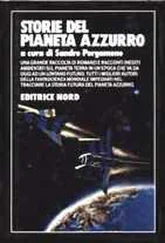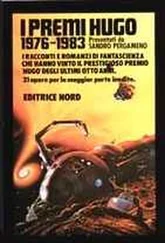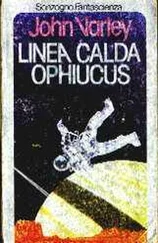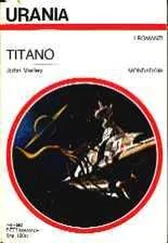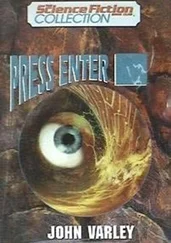Eventually we reached the base of the ship, which I knew mainly because we left square corridors and right-angle turns for the haphazard twists of the Great Dump. Not long after that we descended some stairs and were in a tunnel bored through solid rock. I still had no idea how far this network extended. I gathered it was possible to walk all the way to King City without ever visiting the surface.
We came to an abandoned, dimly-lit tube station. Or it had been abandoned at one time, but the Heinleiners had restored it: pushed the trash on the platform to one side, hung a few lights, homey touches like that. Floating a fraction above a gleaming silver rail was a six-person Maglev car of antique design. It had no doors, peeling paint, and the sign on the side still read MALL 5-9 SHUTTLE. With stops at all the major ghost warrens along the way, no doubt: this baby was old .
Random cushions had been spread on the ripped-out seats and we sat on those and Smith pulled on a cord which rang a little tinkling bell, and the car began to glide down the rail.
"The whole idea of building a superman has acquired a lot of negative baggage over the years," he said, picking up as if the intervening walk had never happened. As if he needed another annoying characteristic. "The German Fascists are the first ones I'm aware of who seriously proposed it, as part of an obsolete and foolish racial scheme."
"I've read about them," I said.
"It's nice to talk to someone who knows a little history. Then you'll know that by the time it became possible to tinker with genes, a lot more objections had been raised. Many of them were valid. Some still are."
"Is that something you'd like to see?" I asked. "A superman?"
"It's the word that throws you off. I don't know if a 'superman' is possible, or desirable. I think an altered human is an idea worth looking into. When you consider that these carcasses we're walking around in were evolved to thrive in an environment we've been evicted from…"
Maybe he said more, but I missed it, because just about then we had a head-on collision with another tram going in the opposite direction. Obviously, we didn't really. Obviously, it was just the reflection of the headlights of our own car as we approached another of those ubiquitous null-fields. And even more obviously, you weren't there to stand up and shout like a fool and see your life pass before your eyes, and I'll bet you would have, too. Or maybe I'm just slow to catch on.
Smith didn't think so. He was very apologetic when he realized what had happened, and took time to tell me about another little surprise in store, which happened a minute later when a null-field vanished in front of us and, with a little gust of wind, we entered vacuum and began to really pick up speed. The tunnel walls blurred in the beam of our headlights, details snatched away before they could be perceived.
He had more to say on the subject of human engineering. I didn't get it all because I was concentrating on not breathing, still learning to wear a null-suit. But I got his main points.
He thought that while Gretel's method was wrong, her goal was worthwhile, and I couldn't see what was wrong with it, either. Basically, we either manufacture our environment or adapt to it. Both have hazards, but it did seem high time we at least start discussing the second alternative.
Take weightlessness, for example. Most people who spent a lot of time in free-fall had some body adaptations made, but it was all surgical. Human legs are too strong; push too hard and you can fracture your skull. It's handy to have hands instead of feet at the ends of your ankles. Feet are as useless as vermiform appendices in free-fall. It's also useful to be able to bend and twist more than the human body normally can.
But the question before the court was this: should humans be bred to space travel? Should the useful characteristics be put into the genes, so children are born with hands instead of feet?
Maybe so, maybe not. We weren't talking radical change here, or anything that couldn't be done just as easily surgically, without raising the troublesome issues of more than one species of human being.
But what about a human adapted to vacuum? I've no idea how to go about it, but it probably could be done. What would he look like? Would he feel superior to us? Would we be his brother, or his cousin, or what? one thing was sure: it would be a lot easier to do it genetically than with the knife. And I feel certain the end result would not look very human.
I chewed that one over quite a bit in the coming days, examining my feelings. I found that most of them came from prejudice, as Smith had said. I'd been raised to think it was wrong. But I found myself agreeing that it was at least time to think it over again.
As long as I didn't have to clean up after kewpies.
***
The train car pulled into a siding at another abandoned station where somebody had scrawled the word "Minamata" over whatever had been there before. I had no idea how far we'd come, or in what direction.
"This is still part of the Delambre dump, more or less," Smith said, so at least I had a general idea. We started down a long, filthy corridor, Smith's flashlight beam bobbing from wall to wall as we walked. In a movie, rats and other vermin would have been scuttling out of our way, but a rat would have needed a null-suit to survive this place; mine was still on, and I was still thinking about breathing.
"There's really no reason why the stuff in here shouldn't be spread out over the surface like the rest of the garbage," he went on. "I think it's mainly psychological reasons it's all pumped in here. This is a nasty place. If it's toxic or radioactive or biochemically hazardous, this is where it comes."
We reached an air lock of the kind that used to be standard when I was a child, and he motioned me inside. He slapped a button, then gestured toward the air fitting on the side of my chest.
"Turn that counter-clockwise," he said. "They only come on automatically when there's a vacuum. There's gas where we're going, but you don't want to breathe it."
The lock cycled and we stepped into Minamata.
The place had no name on the municipal charts of King City, just Waste Repository #2. The Heinleiners had named it after a place in Japan that had suffered the first modern-day big environmental disaster, when industries had pumped mercury compounds into a bay and produced a lot of twisted babies. So sorry, mom. That's the breaks.
Minamata Luna was really just a very large, buried storage tank. By large, I mean you could have parked four starships the size of the Heinlein without scraping the fenders. Texas is a lot bigger, but it doesn't feel like being a bug in a bottle because you can't see the walls. Here you could, and they curved upward and vanished into a noxious mist. The far end was invisible.
Maybe there was some artificial light in there. I didn't see any, but they were hardly necessary. The bottom third of the horizontal cylinder was full of liquid, and it glowed. Red here, green there… sometimes a ghastly blue. The makers of horror films would have killed to get that blue.
We had entered at what seemed the axis of the cylinder, which was rounded off at this end, like a pressure tank. A ledge, three meters wide and with a railing, curved away from us in each direction, but to the right was blocked off with a warning sign. Looking past it, I could see the ledge had crumbled away in several places. When I looked back Smith was already moving away from me toward the left. I hurried to catch up with him.
I never did quite catch him. Every time I got close my eye was drawn by the luminescent sea off to my right, and a few hundred meters down.
Читать дальше

